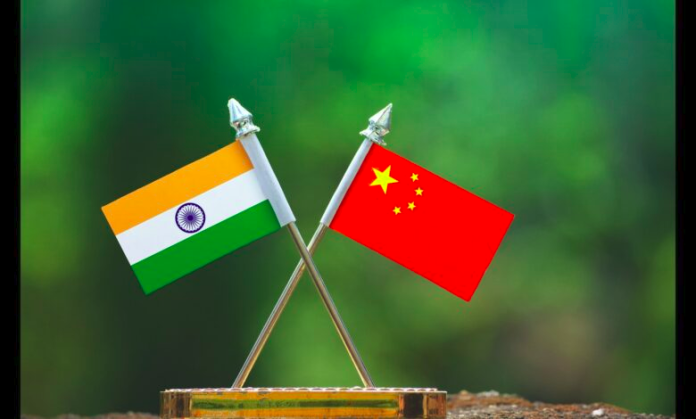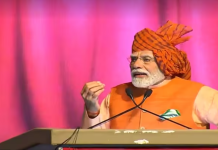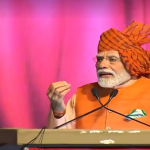January witnessed the failure of the 14th spherical of corps commander-level talks alongside the Line of Precise Management (LAC) in Ladakh. Put merely, sustained border stress between India and China might be a geopolitical “new regular.” However whereas the bloody conflict at Galwan in June 2020 might have opened this new chapter, the issues on the root of the dispute are centuries outdated.
In my ebook, The Frontier Complicated, I look at the imperial roots of the border dispute in Ladakh. Whereas the proximal causes of in the present day’s stress are tied to the decisive 13 years that preceded the struggle in 1962, the deeper causes of the border dispute stretch again to the century between the British creation of Jammu and Kashmir and India’s Independence, when colonial officers tried to configure a exact, “scientific” border alongside the Himalayas. They usually failed.
The British developed and deployed a spread of practices to raised outline the territorial limits of their empire in South Asia. As an illustration, they utilised the boundaries of the watersheds of the Indus and Brahmaputra as guiding traces for mappable borderlines. This “water-parting precept” mirrored a broader transformation in geography pushed by advances in surveying and hydrology, in addition to imperial enlargement and the necessity to present rival empires who owned what. By utilising the boundaries of the Indus watershed system for the political boundary of northern India, the British believed they have been utilizing nature to outline their territory.
Whereas the Himalayas have been lengthy assumed to be an unbroken chain of mountains, after nearer surveying this neat wall revealed a fancy topography, significantly in japanese Ladakh. Within the area often called Aksai Chin, bisected in the present day by LAC, there isn’t any linear mountain vary to comply with. As an alternative, the rolling edges of the Tibetan Plateau and the converging Karakoram and Nice Himalayan ranges kind an enormous topographical knot a whole lot of miles large. The Aksai Chin doesn’t supply a transparent pure line for a border to comply with.
Past the topographical problem of uncooperative watersheds, British directors additionally confronted the problem of an absence of historic borderlines. As within the plains of India, British officers sought out Ladakh’s customary boundaries. However whereas Ladakh had long-standing border factors, it had no full borderline. This made sense in a mountainous area largely accessed by passes (the title Ladakh interprets as “land of passes”). However it proved unsatisfactory to imperial directors whose view of territory was more and more outlined by the two-dimensional house of a political map.
Among the factors of battle in japanese Ladakh in the present day are centuries-old border factors. Demchok, the place Indian and Chinese language troopers incessantly face off, is referenced within the Royal Chronicles of Ladakh, courting again to the Treaty of Tingmosgang in 1684. This city was a border level alongside the primary route between Leh and Lhasa. Routes like these, whether or not to Tibet, Central Asia, Kashmir, or southward to Kullu and the plains of India, mirrored Ladakh’s historic nexus as a “crossroads of excessive Asia”. However elsewhere in japanese Ladakh, there have been no such historic borderlines. And why would there be? The arid plateau east of Ladakh was successfully a “no man’s land” — typically crossed by merchants, pilgrims, and nomadic herders, however by no means completely occupied.
After 1857, safety considerations progressively eclipsed industrial aspirations past Ladakh and the imperial authorities despatched waves of surveyors and directors to raised perceive and management their Himalayan periphery. However the huge, harsh panorama produced a sketchy and incomplete picture: A border that was by no means totally demarcated regardless of normal descriptions in memorandums, maps, and notes to the Tibetan and Qing governments. When India gained its Independence in 1947, it additionally inherited maps that incessantly failed to indicate any political borderline in japanese Ladakh.
The victory of the Individuals’s Liberation Military (PLA) in 1949 and the following march on Tibet in 1950 introduced the 2 Asian giants to one another’s ill-defined doorsteps. Jawaharlal Nehru’s choice to not forcefully increase the border problem with Zhou Enlai within the early Nineteen Fifties, and his choice to have the undemarcated borderlines on India’s political maps solidified in 1954, restricted diplomatic choices to resolve the dispute at a time when India had extra leverage over China than at any time since.
Moreover recounting the failure to craft a exact Himalayan border, this historical past additionally reveals a broader revolution in political conceptions of house. British makes an attempt to configure Ladakh as a part of a contemporary system of interlocking territories ignored a historical past of complicated political relations between Himalayan polities. Borders — disputed or not — are so ubiquitous in our fashionable world as to make them seem nearly pure. However on the coronary heart of India and China’s disputed border is the bigger historic problem of becoming this area right into a territorial mannequin ill-suited to it.
The temporary struggle in 1962 imposed the primary efficient full borderline within the area. However in reality, not like India’s Line of Management with Pakistan, LAC nonetheless capabilities extra in observe as a colonial-era frontier, open to shifting and ambiguity over who occupies what. Whereas overlapping patrols have been the accepted observe for many years, these are more and more considered as incursions. Positions have solidified alongside LAC, even when a mutually accepted borderline has not.
It’s no small irony that the only biggest bone of competition between the 2 most populous nations on earth is an uninhabited wasteland with little financial, strategic, or cultural worth. Geography is outwardly not and not using a sense of humour.















